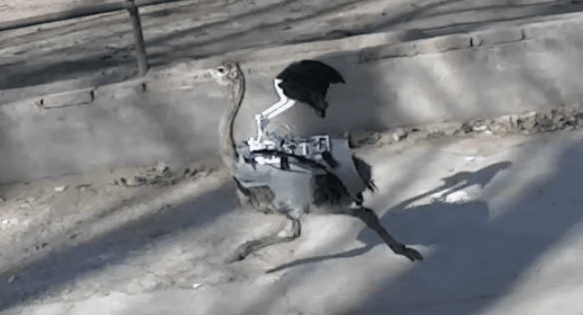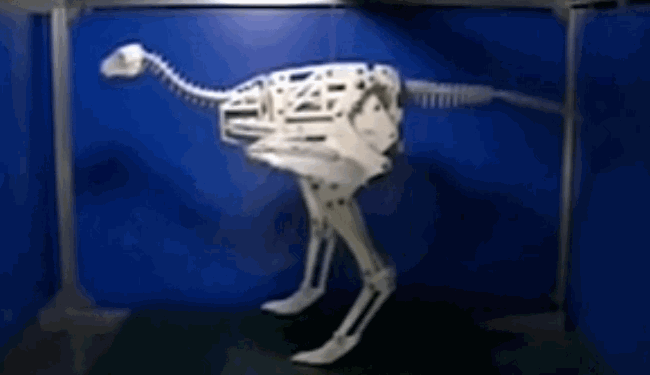Everyone knows birds descended from dinosaurs, but exactly how that happened is the subject of much study and debate. To help clear things up, these researchers went all out and just straight up built a robotic dinosaur to test their theory: that these proto-birds flapped their “wings” well before they ever flew.
Now, this isn’t some hyper-controversial position or anything. It’s pretty reasonable when you think about it: natural selection tends to emphasize existing features rather than invent them from scratch. If these critters had, say, moved from being quadrupedal to being bipedal and had some extra limbs up front, it would make sense that over a few million years those limbs would evolve into something useful.
But when did it start, and how? To investigate, Jing-Shan Zhao of Tsinghua University in Beijing looked into an animal called Caudipteryx, a ground-dwelling animal with “feathered forelimbs that could be considered “proto-wings.”
Based on the well-preserved fossil record of this bird-dino crossover, the researchers estimated a number of physiological metrics, such as the creature’s top speed and the rhythm with which it would run. From this they could estimate forces on other parts of the body — just as someone studying a human jogger would be able to say that such and such a joint is under this or that amount of stress.
What they found was that, in theory, these “natural frequencies” and biophysics of the Caudipteryx’s body would cause its little baby wings to flap up and down in a way suggestive of actual flight. Of course they wouldn’t provide any lift, but this natural rhythm and movement may have been the seed which grew over generations into something greater.
To give this theory a bit of practical punch, the researchers then constructed a pair of unusual mechanical items: a pair of replica Caudipteryx wings for a juvenile ostrich to wear, and a robotic dinosaur that imitated the original’s gait. A bit fanciful, sure — but why shouldn’t science get a little crazy now and then?
 In the case of the ostrich backpack, they literally just built a replica of the dino-wings and attached it to the bird, then had the bird run. Sensors on board the device verified what the researchers observed: that the wings flapped naturally as a result of the body’s motion and vibrations from the feet impacting the ground.
In the case of the ostrich backpack, they literally just built a replica of the dino-wings and attached it to the bird, then had the bird run. Sensors on board the device verified what the researchers observed: that the wings flapped naturally as a result of the body’s motion and vibrations from the feet impacting the ground.
The robot is a life-size reconstruction based on a complete fossil of the animal, made of 3D-printed parts, to which the ostrich’s fantasy wings could also be affixed. The researchers’ theoretical model predicted that the flapping would be most pronounced as the speed of the bird approached 2.31 meters per second — and that’s just what they observed in the stationary model imitating gaits corresponding to various running speeds.
 You can see another gif over at the Nature blog. As the researchers summarize:
You can see another gif over at the Nature blog. As the researchers summarize:
These analyses suggest that the impetus of the evolution of powered flight in the theropod lineage that lead to Aves may have been an entirely natural phenomenon produced by bipedal motion in the presence of feathered forelimbs.
Just how legit is this? Well, I’m not a paleontologist. And an ostrich isn’t a Caudipteryx. And the robot isn’t exactly convincing to look at. We’ll let the scholarly community pass judgment on this paper and its evidence (don’t worry, it’s been peer reviewed), but I think it’s fantastic that the researchers took this route to test their theory. A few years ago this kind of thing would be far more difficult to do, and although it seems a little silly when you watch it (especially in gif form), there’s a lot to be said for this kind of real-life tinkering when so much of science is occurring in computer simulations.
The paper was published today in the journal PLOS Computational Biology.
Life-size robo-dinosaur and ostrich backpack hint at how first birds got off the ground was first posted on https://techcrunch.com/gadgets/
